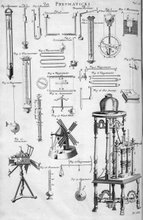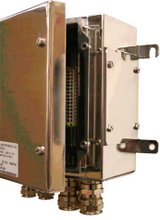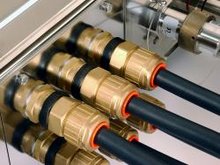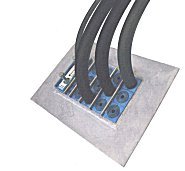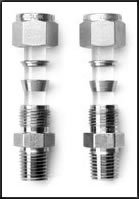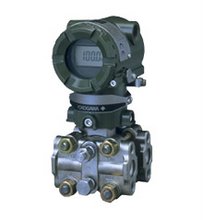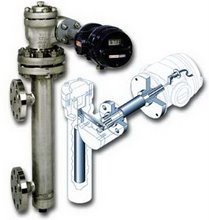Polyvinyl Chloride (PVC)
Polyvinyl chloride is basically a hard thermoplastic, but by blending with certain plasticisers a range of general purpose flexible cable compounds of varying degrees of softness can be produced. By the use of selected plasticisers and other additives, grades of PVC can be made which are suitable for either hot or cold ambient temperatures.
Properties
Polyvinyl chloride is a good general purpose thermoplastic. It has good mechanical and ageing properties, and excellent resistance to ozone and weather. It is preferable to pigment it with carbon black to obtain optimum resistance to the effects of sunlight.
Cables insulated and sheathed with PVC will operate satisfactorily when exposed to or immersed in salt or fresh water. Standard PVC compounds are reasonably flame retardant and this property can be improved by special compounding techniques. In general PVC has good resistance to chemicals but affected by solvents and some oils which tend to leach out of the plasticiser and thus cause embrittlement. The so-called 'Heat resisting' grades of PVC have good ageing characteristics at elevated temperatures, but suffer in common with general purpose grades of the tendency to deform under pressure as the temperatures approaches the melting point of the PVC (approx. 130°C). The insulation resistance of PVC is lower than that of some plastics but more than adequate for most wiring applications.
Compared with elastomers, PVC and other thermoplastic materials are susceptible to temperature variations, and they become progressively less flexible as the ambient temperature is lowered.
In general PVC cables should not be installed when the temperature is below 0°C unless the cables have been stored above this temperature for the previous 24 hours. Failure to observe this precaution may result in cracking or shattering of the PVC.
Uses
PVC is used extensively for general wiring cables, low voltage mains cable, domestic flexibles, telephone cable and instrument wiring. It is widely used as a corrosion resistant coating over lead and aluminium sheathed cables.
The maximum continuous operating temperature of general purpose compounds is specified as 70°C and for heat resisting grades as 85°C.
Polyethylene (Polythene)
Polyethylene is a thermoplastic obtained by the polymerisation of ethylene. Depending on the particular polymerisation technique used, polyethylene of varying densities and molecular weight can be produced, and these can therefore be broadly classified as either low or high density polyethylene.
Properties
Polyethylene has extremely good electrical characteristics and excellent resistance to water, chemicals and some solvents. However, it has only moderate resistance to oils and has the disadvantage of being flammable. The low temperature properties of polyethylene are good. It is customary to pigment with carbon black both high and low density polyethylene, to improve their resistance to weather. Polyethylene is an excellent insulation for high voltage cables, but when extruding thick layers of dielectric, care has to be taken to prevent the inclusion of voids during this process. Polyethylene has a melting point of about 110°C-115°C which is a serious disadvantage for cables liable to be subjected to short circuit and overload conditions; this is one of the reasons why the use of this material has discontinued for the insulation of general wiring cables.
Uses
Polyethylene is extensively used either in the solid or expanded form for the insulation of communication cables. One major application is for the insulation of coaxial cable for television downleads, and another is for the insulation of multicore telephone cables where its excellent electrical properties enable a thin small radial wall of insulation to be employed. Polyethylene is used for submarine cables and in some types of high voltage cables. High density polyethylene can be used as an external sheath on cables to provide corrosion protection.
The recommended continuous operating temperature of polyethylene is normally stated as 70°C, to allow a factor of safety for overloads up to a maximum temperature of 90°C.
Wednesday, September 19, 2007
Subscribe to:
Posts (Atom)




